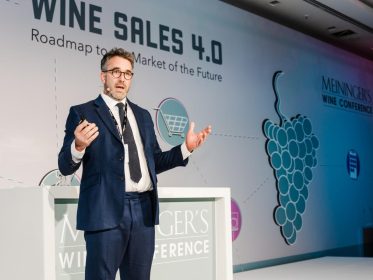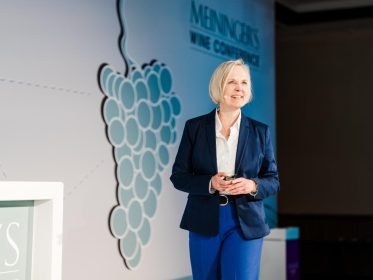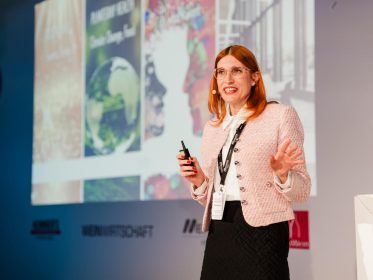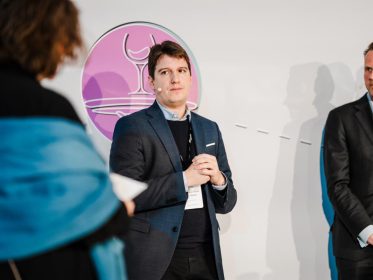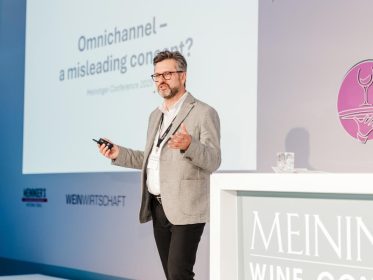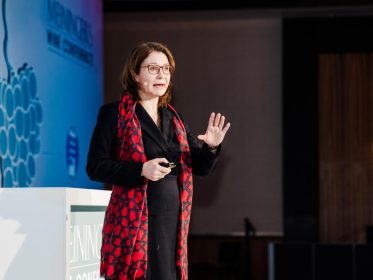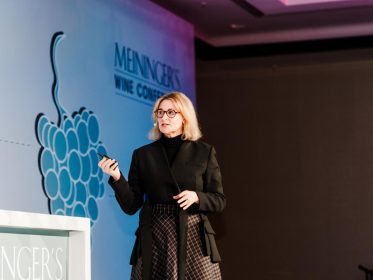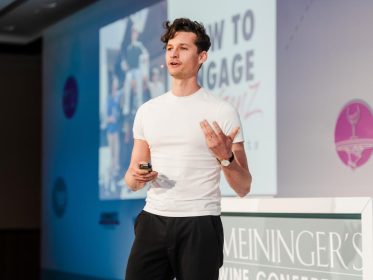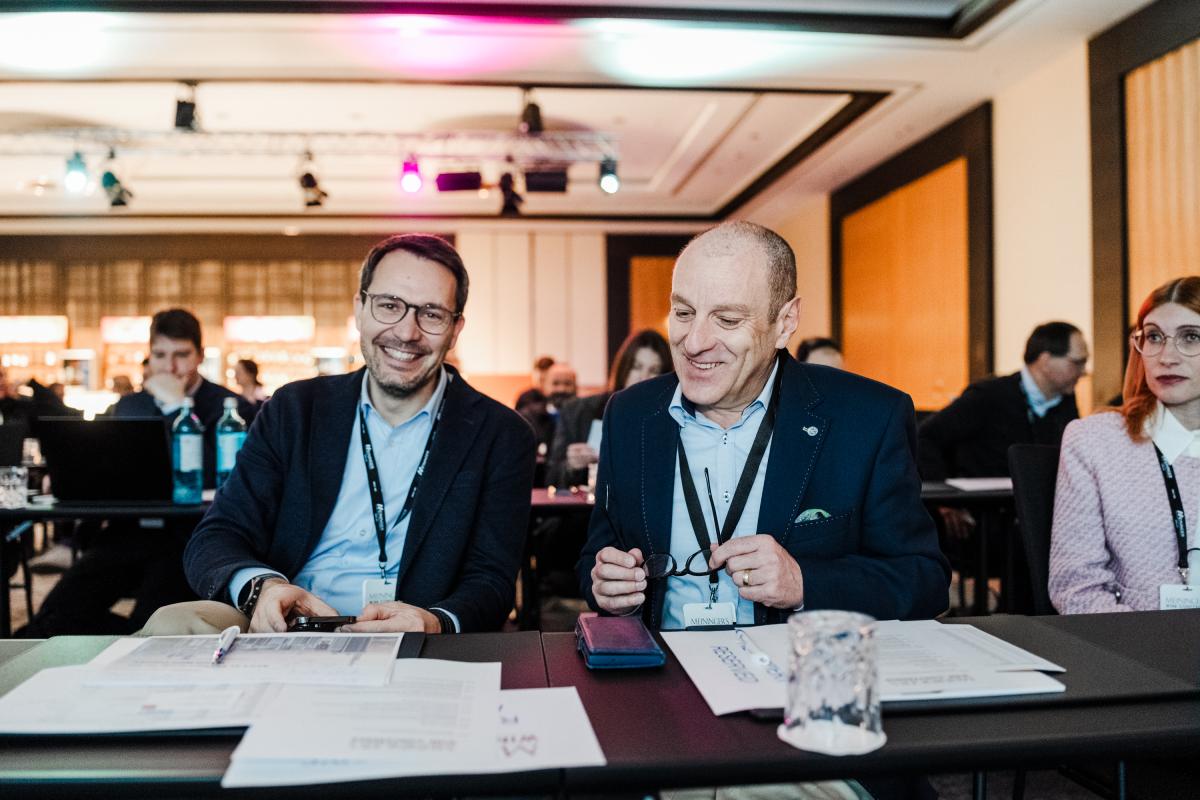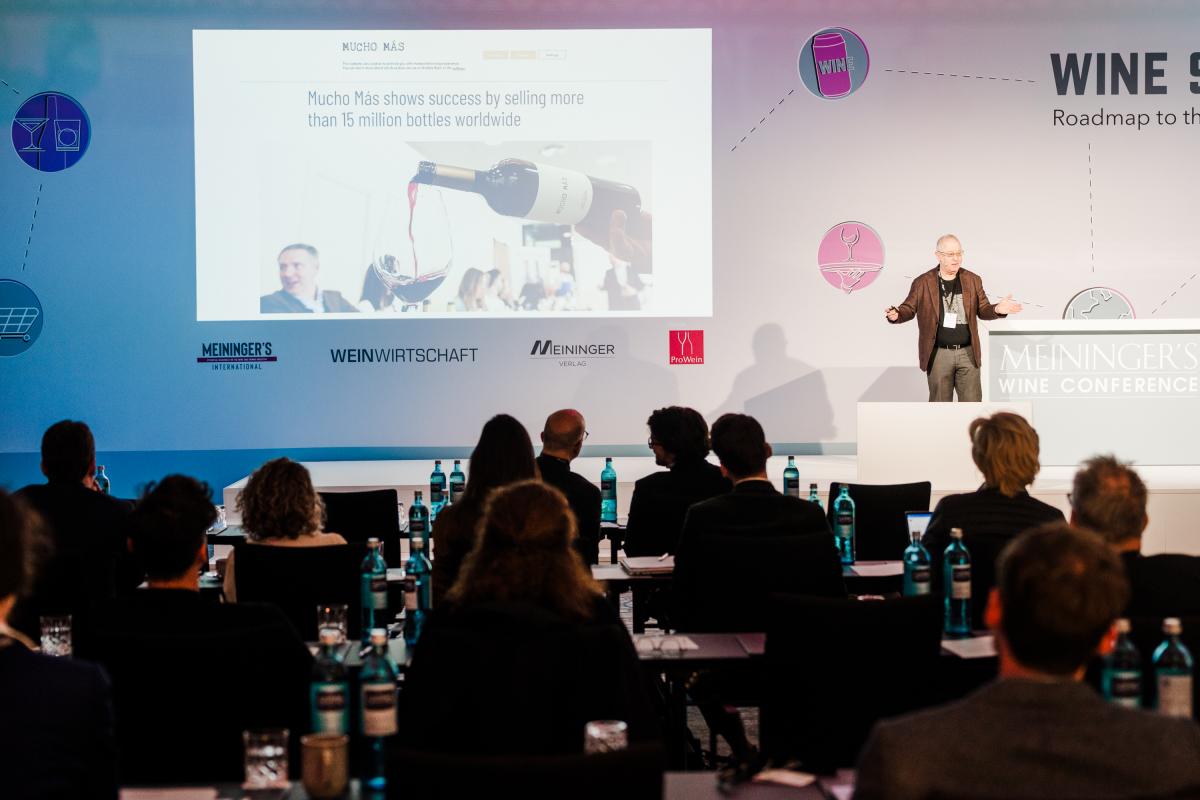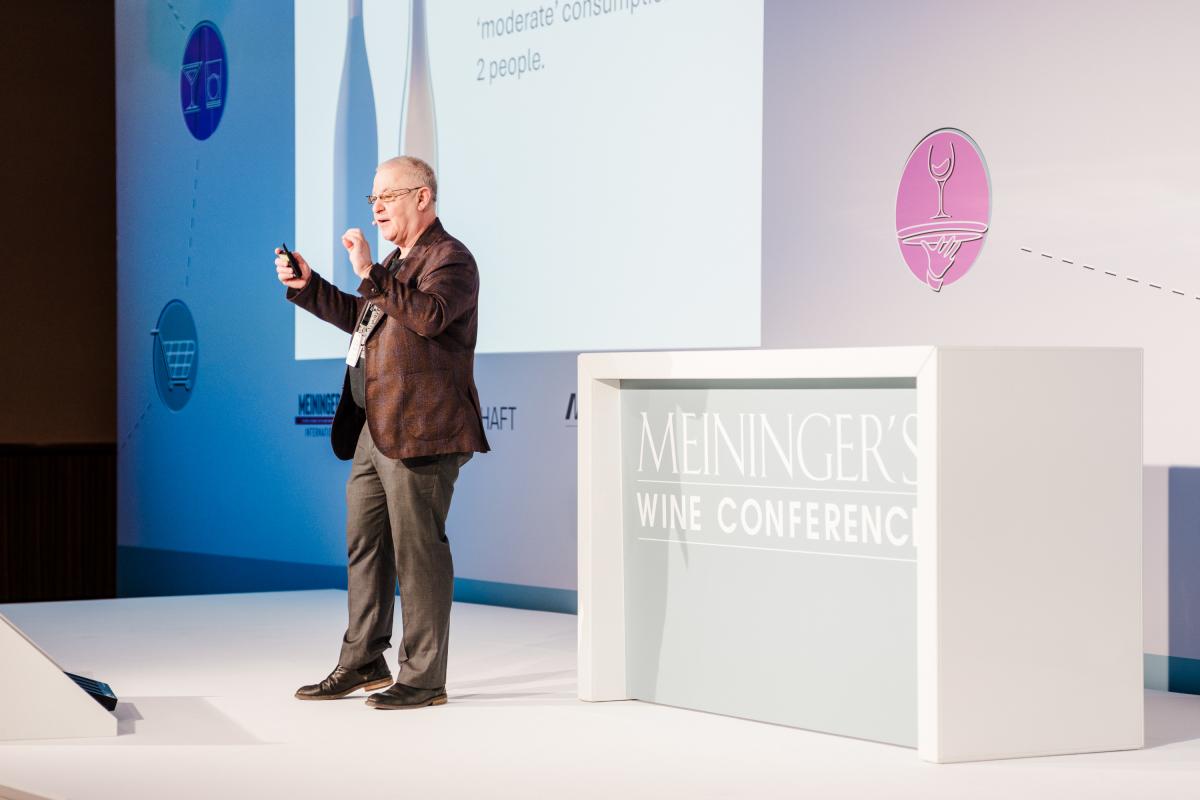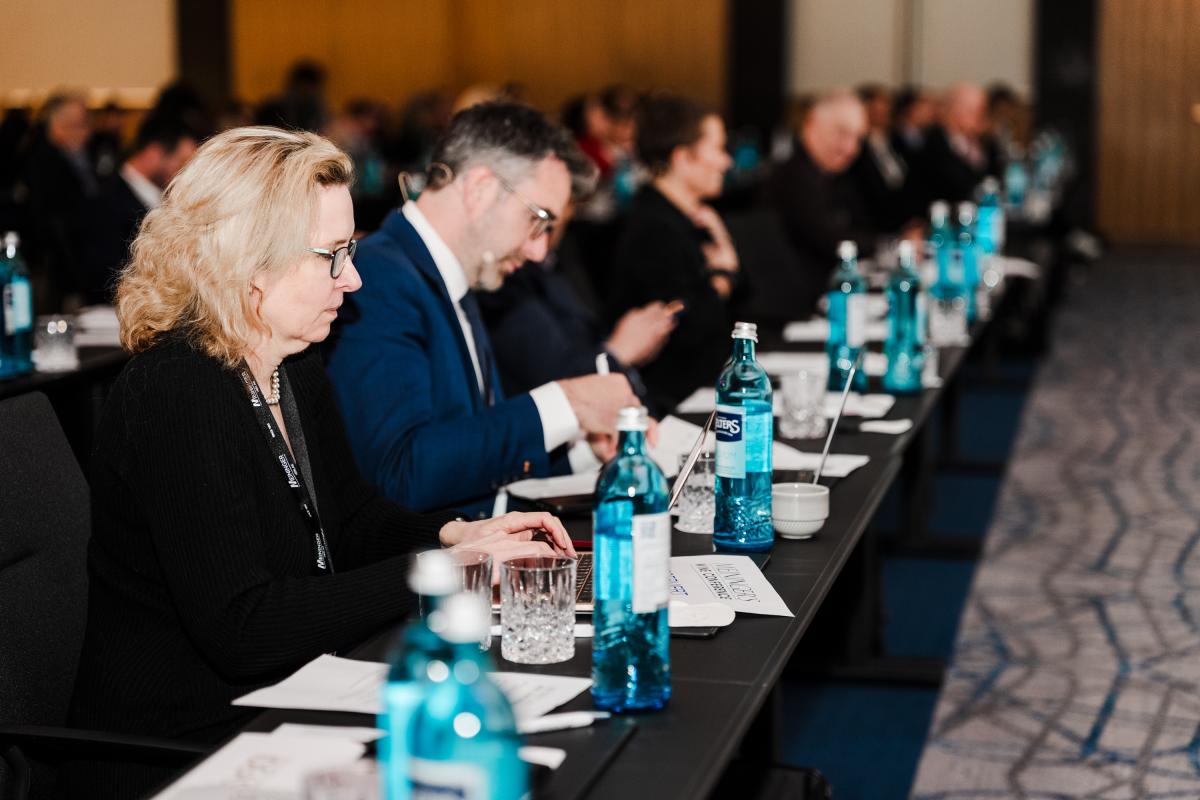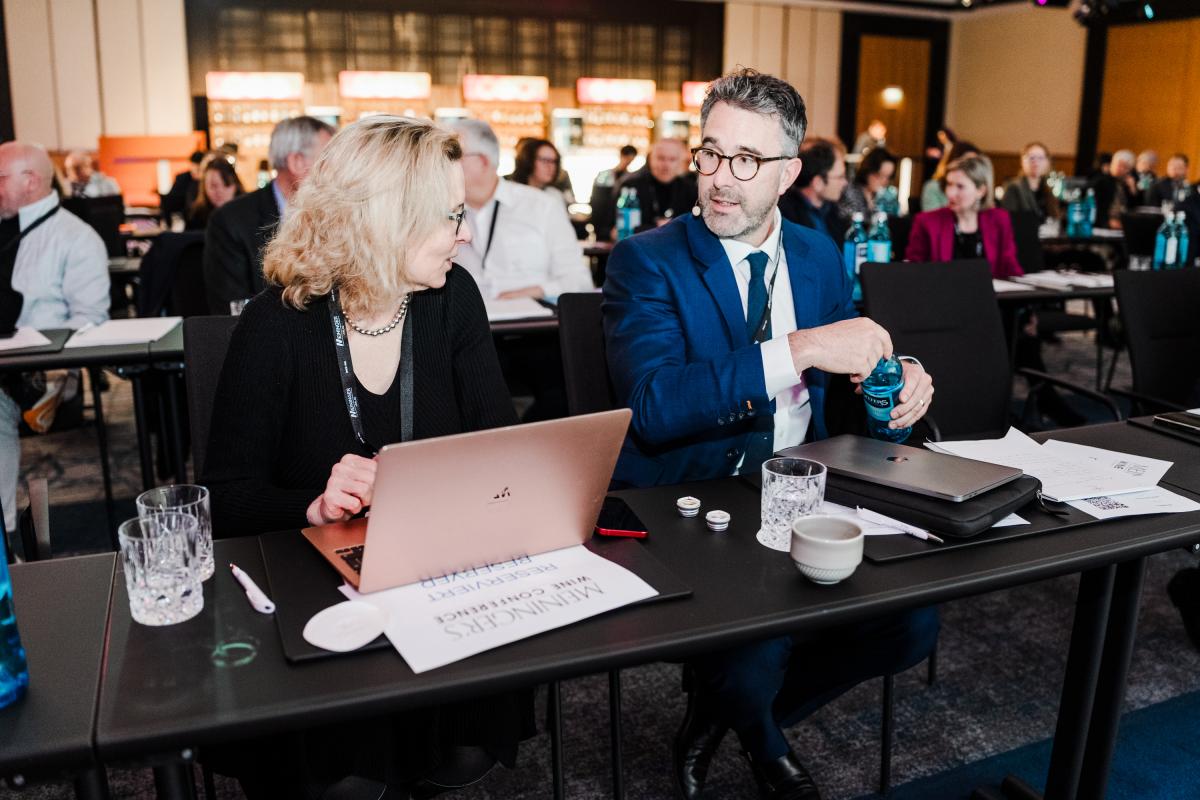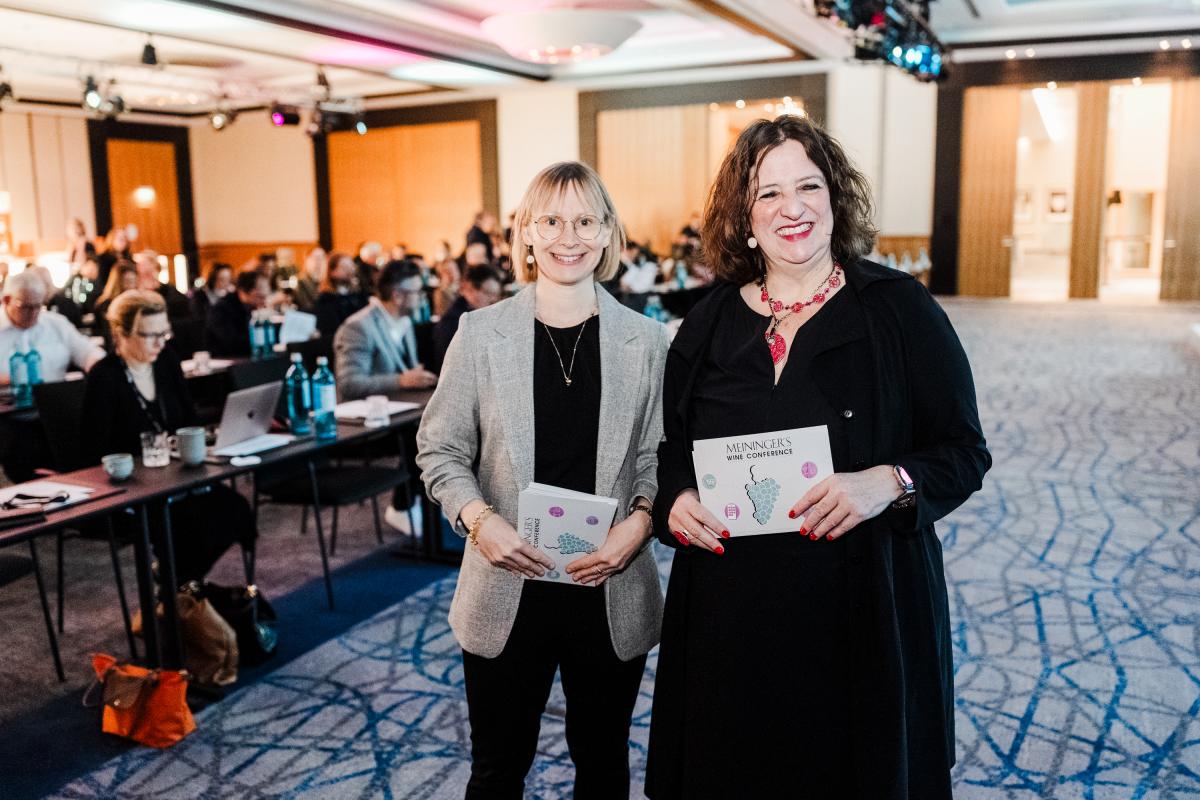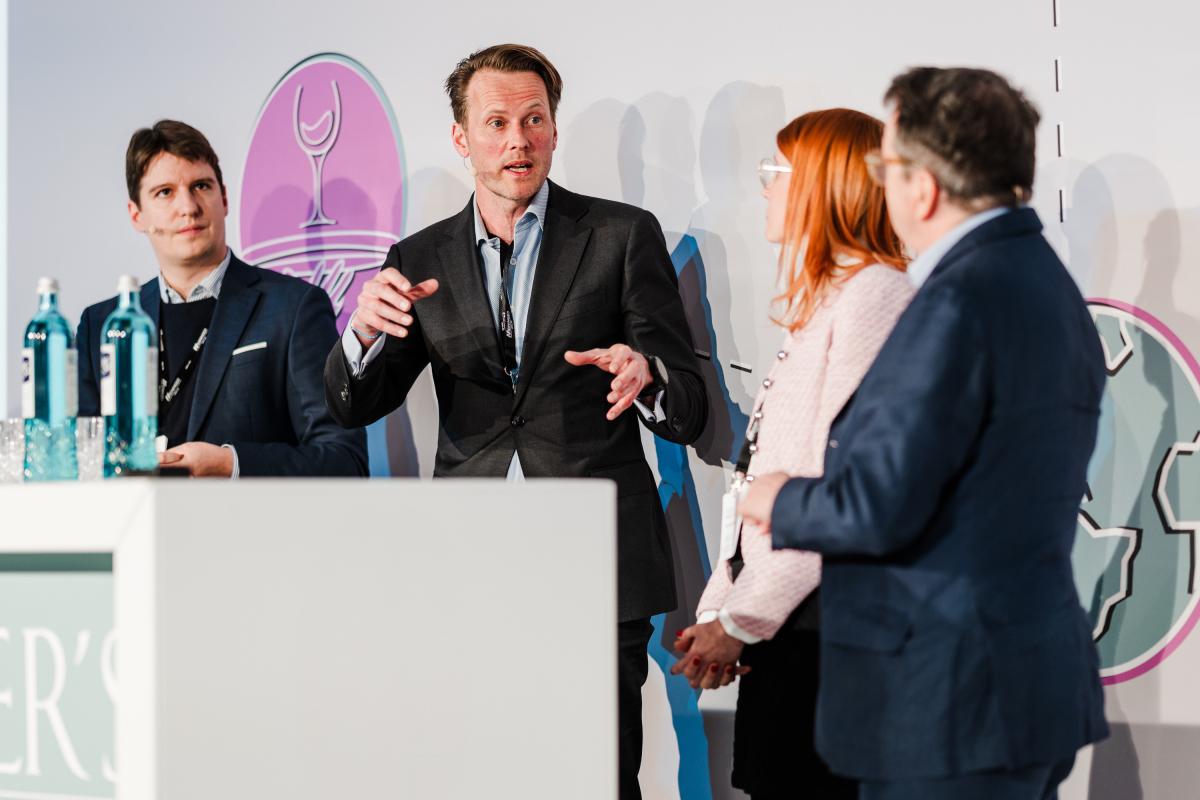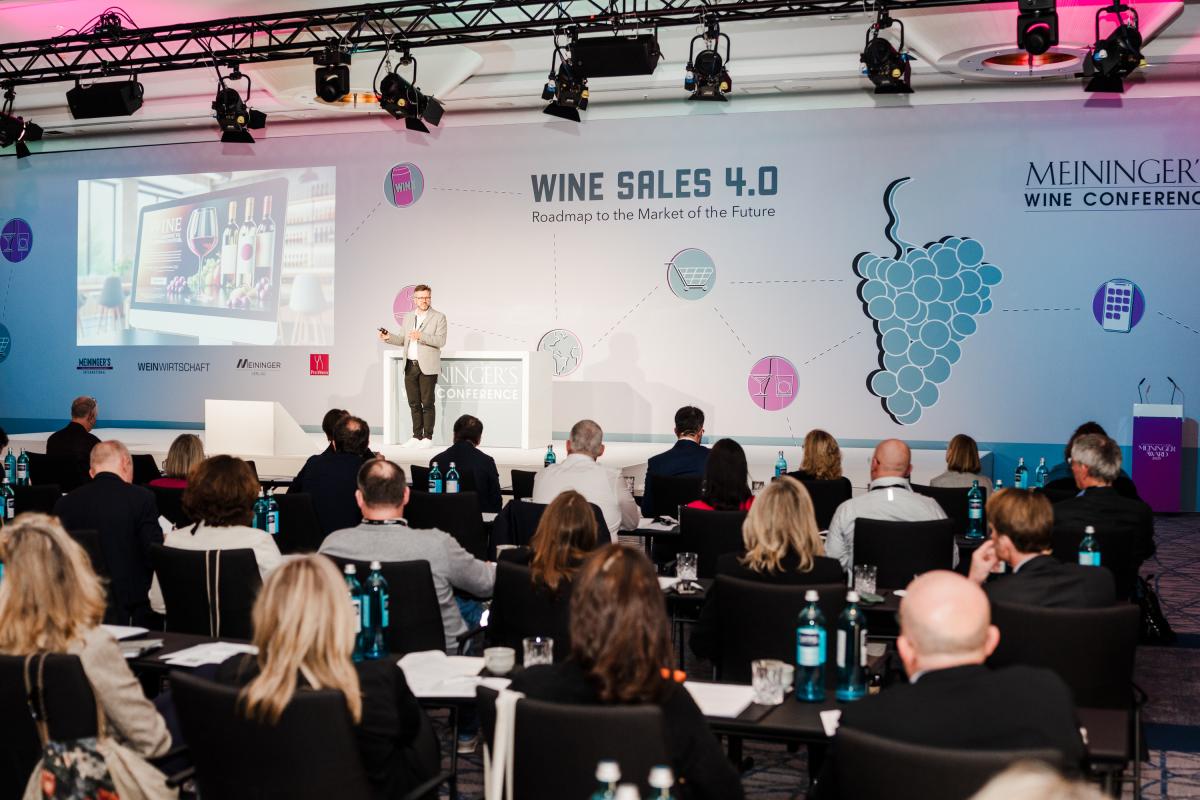The Wine Industry’s Turning Point: Insights from Meininger’s Wine Conference 2025
Author: Veronika Busel
The morning light filtering through Hotel Kö59’s grand windows illuminated a wine industry at a crossroads as over 100 global wine executives gathered for the third annual Meininger’s Wine Conference on March 15. Sponsored by ProWein with Wine Travel Awards and Communication Media Group Drinks+ as official informational partners, this year’s discussions confronted the central question, “How to Find the Best Ways to Sell Wine?” with unprecedented urgency. For those arriving just as the conference commenced – some delayed by flights touching down at the very hour the event began – there was no gradual warm-up. The tone was set immediately: this would be a day of unflinching examination, where the industry’s challenges would be dissected without sugarcoating, and where solutions would need to be as substantive as the problems were deep.
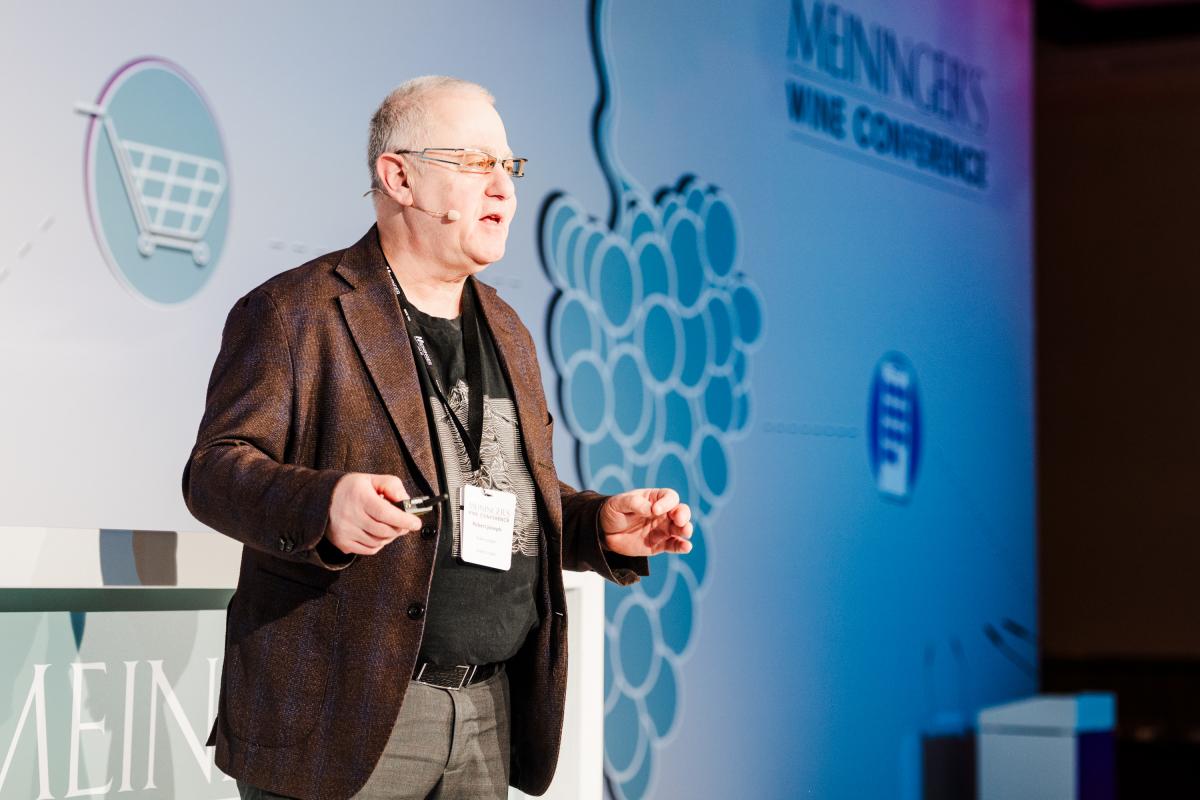
The mood was palpably different from previous years. Robert Joseph, Meininger’s International Associate Editor and weekly columnist, captured it perfectly when he noted after his opening presentation, “Time for a Change?”: “The situation is fundamentally different this year. We’re not debating whether problems exist, but how structural they are.” His words hung in the air as attendees grappled with the new reality of shrinking margins, stubbornly shifted consumption patterns, and a global market that refused to rebound to pre-pandemic norms. Joseph had structured his talk with deliberate bluntness, explaining, “I put all the bad stuff in the first three minutes – shrinking margins, consumption shifts, stagnant recovery. Not to depress everyone, but because we need to stop pretending this is just cyclical or about Ukraine or COVID, or you name it.” Yet, in stark contrast, Joseph offered a glimmer of hope, saying, “However, I truly believe strong businesses will survive through one thing: branding. This is the direction we should look at.”
This unflinching approach set the tone for discussions that exposed the industry’s tendency to rationalize its struggles. Some participants still clung to the belief that current difficulties were temporary – mere aftershocks of pandemic disruptions or geopolitical conflicts. But the conference systematically dismantled these notions.
The potential for new Trump tariffs on European wines loomed particularly large in discussions during the break. “It’s a nightmare,” Joseph emphasized. “Unlike China’s targeted tariffs on Australian wines, Trump could impose 25% duties tomorrow, rescind them next week, and then reimpose them capriciously. The uncertainty alone is paralyzing when ocean freight takes weeks.”
He continued, adding more context: “It may be that Champagne gets nothing, while other regions could get hit. We’ve seen this before, where Italian wines weren’t tariffed, but French wines were. That could change at any time. What’s truly frightening is that with China’s tariff on Australia, which reached 200%, we at least knew where we stood. There was diplomacy, and eventually, the tariffs were lifted. But with Trump, there’s no telling what will happen. It could be imposed, taken off, and then put on again. That constant uncertainty is terrifying.
When you’re shipping wine to America, it takes a long time. You have boats crossing the Atlantic, and suddenly Trump may decide to retaliate over something. Today, Australia might feel safe, but tomorrow? It’s anyone’s guess. South Africa, for example, might seem safe, but Trump doesn’t like them. He could turn on them at any moment. This constant unpredictability makes the world a very uncertain place.”
After this thought-provoking opening presentation by Joseph, Prof. Dr. Simone Loose of Geisenheim University took the floor, discussing the shifting dynamics of emerging markets in her presentation, “Shifting Dynamics: Will Emerging Markets Compensate for the Decline in Established Ones?” She presented data showing how markets like China, with its economic growth and demand for Western luxury goods, offer vast potential for high-quality products.
Walking through the conference halls, one could trace the event’s evolution in real time. The first edition of the Meininger’s Wine Conference unfolded in 2023, with a focus on the pressing topic of sustainability, “From Production to Selling: Sustainability Redefined.” This had evolved beyond theoretical discussions into practical case studies. Last year’s technology showcase under the theme “Wine Goes Tech: From Robots to AI, from Vineyard to Shelf,” had given way to tangible applications changing how wine reaches consumers through pioneering technologies and how the wine industry can leverage them profitably.
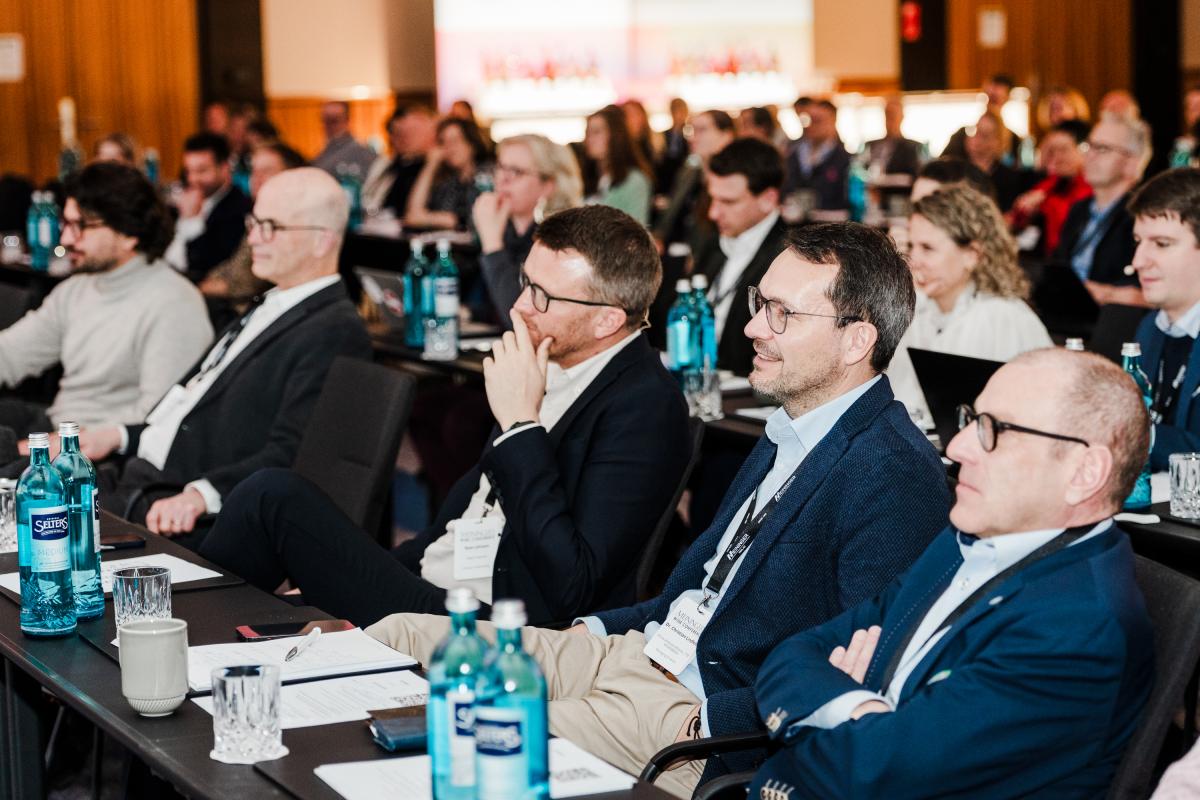
This year, with the official topic “Wine Sales 4.0: Roadmap to the Market of the Future,” with talks on everything from appealing to new demographics to finding new markets, the progression felt natural, like watching a vine mature through successive vintages.
What became immediately clear was that traditional sales approaches are being challenged at every level. Millennial and Gen Z buyers – now representing nearly half of premium wine purchases – approach the category with entirely different expectations. This topic was explored in depth during the session “Key Factors, Cultural & Gender Differences: The U.S. Experience,” presented by Christian Miller, President of the Wine Market Council, whose research specializes in generational shifts in wine consumption.
Eliah Werner, founder of Young Poets, distilled this shift perfectly in his session “How to Engage with Gen Z”: “They’re less impressed by scores from critics or fancy chateaux they’ve never heard of, and more interested in the story behind the bottle. They want to know about the vineyard’s water conservation efforts before considering the tasting notes. What’s important to them in wine is simplicity, story, fun, and yes, sexy design. They’re just as likely to discover new wines through Instagram reels as they are from shelf displays.”
His point was underscored by Rowena Curlewis, CEO & Co-Founder of Denomination Design, who, later in her presentation “How Design Drives Wine Sales,” demonstrated how packaging aesthetics now function as silent salespeople in an overcrowded market. “A label isn’t just branding – it’s the first touchpoint in a conversation with a consumer who might never read your technical sheet,” she noted, showcasing examples where bold, minimalist designs outperformed traditional ornate labels among younger buyers.
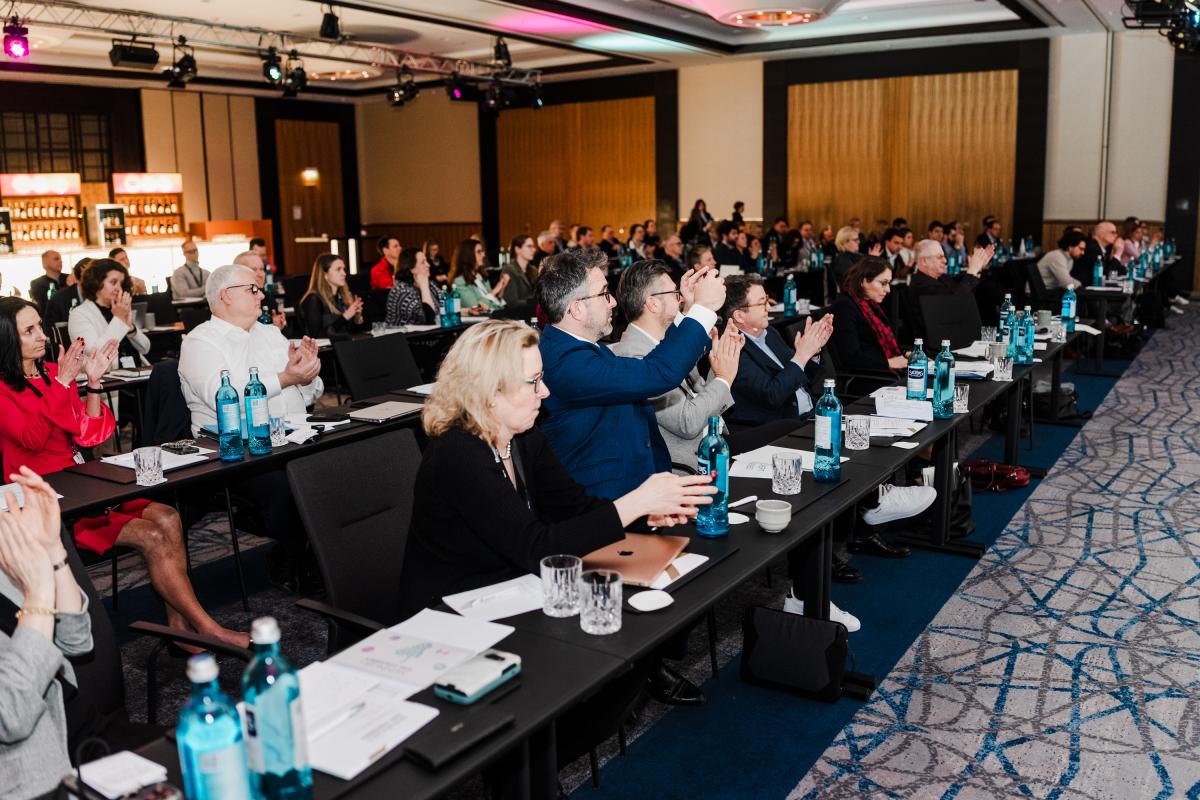
Yet for all the focus on new consumers and digital frontiers, the conference didn’t shy away from the harsh economics reshaping the industry. Bourcard Nesin, Vice President of Research at Rabobank, presented sobering data in his talk “Global Wine Trends: Market Data Insights and Case Studies Driving Innovation,” showing how inflation and supply chain disruptions have compressed margins, particularly for mid-tier producers. “The squeeze isn’t temporary,” he warned. “Wineries that relied on restaurant sales pre-pandemic are finding that channel hasn’t fully recovered – and may never return to previous volumes.” His analysis was complemented by Claudia Burgdorf, Head of Corporate Consumer & Market Knowledge at Rotkäppchen-Mumm, who, in her presentation “What Will We Drink Tomorrow? Future Perspectives for the Wine Industry,” outlined how premiumization strategies are colliding with cost-conscious drinking habits. She explained that today’s consumers will pay premium prices for perceived value, but their definition of value has expanded beyond traditional markers of heritage and prestige to prioritize sustainability credentials, convenience, and experiential elements.
Sara Norell of Systembolaget offered a comprehensive analysis of the trends and opportunities shaping the Swedish market. She pointed out that although overall wine consumption is on the decline, there is a growing demand for no- and low-alcohol beverages, ready-to-drinks (RTDs), and ciders.
Norell’s session was followed by a panel on emerging categories, moderated by Dr. Anja Zimmer, Editor-in-Chief of Meininger’s International, which closed the day on a lighter, more informal note – resembling a casual conversation among old friends and colleagues. Experts including Wim Boekema (World of Nix), Sommelier Marc Almert (Baur au Lac), Claudia Burgdorf (Rotkäppchen-Mumm), and Willi Klinger (Wein & Co.) delved into the trends and potential of RTDs, non-alcoholic alternatives, and wine cocktails. These rapidly growing segments of the beverage industry sparked a lively – and at times heated – discussion, with a focus on the significant improvements in product quality over recent years. The session provided valuable insights into the shifting dynamics of the international wine market. As the afternoon unfolded, the throughline was clear: adaptation is essential. As Wim Boekema, Founder of World of Nix, aptly stated, “The brands that will thrive are those that stop seeing these trends as threats and start treating them as opportunities for reinvention.”
This year, the lineup was truly fantastic, and each of the 12 speakers provided many more insights than we can cover here, presenting in four key blocks: ‘Market Update’, ‘The Consumer of Tomorrow’, ‘Trade out of the Box’, and ‘Beyond the Horizon’. We’ve touched on just a fraction of the discussion. For an in-depth look at the insights shared during the conference, visit the official Meininger website: Meininger Wine Conference 2025. (Additionally, do not miss the exciting announcement of the Meininger Awards 2025, which was unveiled on the same day – explore all the details here: Meininger Awards 2025.
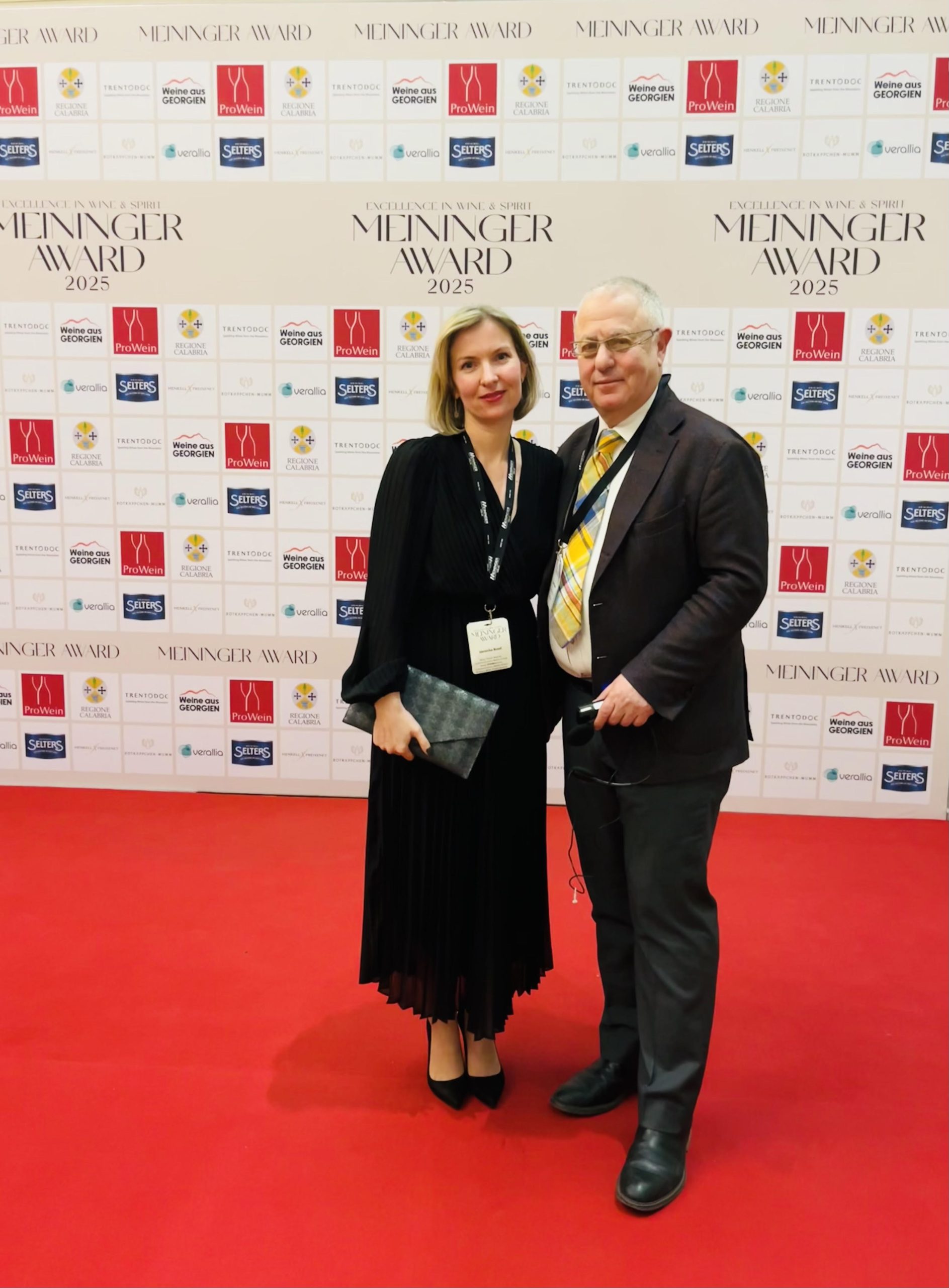
The conference concluded not with grand statements, but with actionable insights – embodying Meininger’s legacy as a leading industry voice, committed to high journalistic standards, objectivity, and staying ahead of the curve. They don’t just report on the industry but help chart its course.
Attendees left with a clear mandate: the future belongs to those willing to rethink everything, from how wine is packaged to who it’s for.
In the end, Meininger’s 2025 conference was more than just a gathering – it was a mirror held up to an industry in transition. The meticulously curated program didn’t merely diagnose challenges but offered actionable solutions, from engaging Gen Z to protecting margins. With its perfect blend of German precision and a global perspective, the event provided something rare: an equal mix of sobering reality and an inspiring roadmap forward. The takeaway was clear – the wine industry’s vulnerabilities are matched only by its extraordinary capacity for reinvention, and those who act on these insights will shape its next chapter.
Stay connected with Wine Travel Awards:
- Facebook: https://www.facebook.com/WineTravelAwards/
- Instagram: https://www.instagram.com/winetravelawards
- LinkedIn: https://www.linkedin.com/company/winetravelawards/
